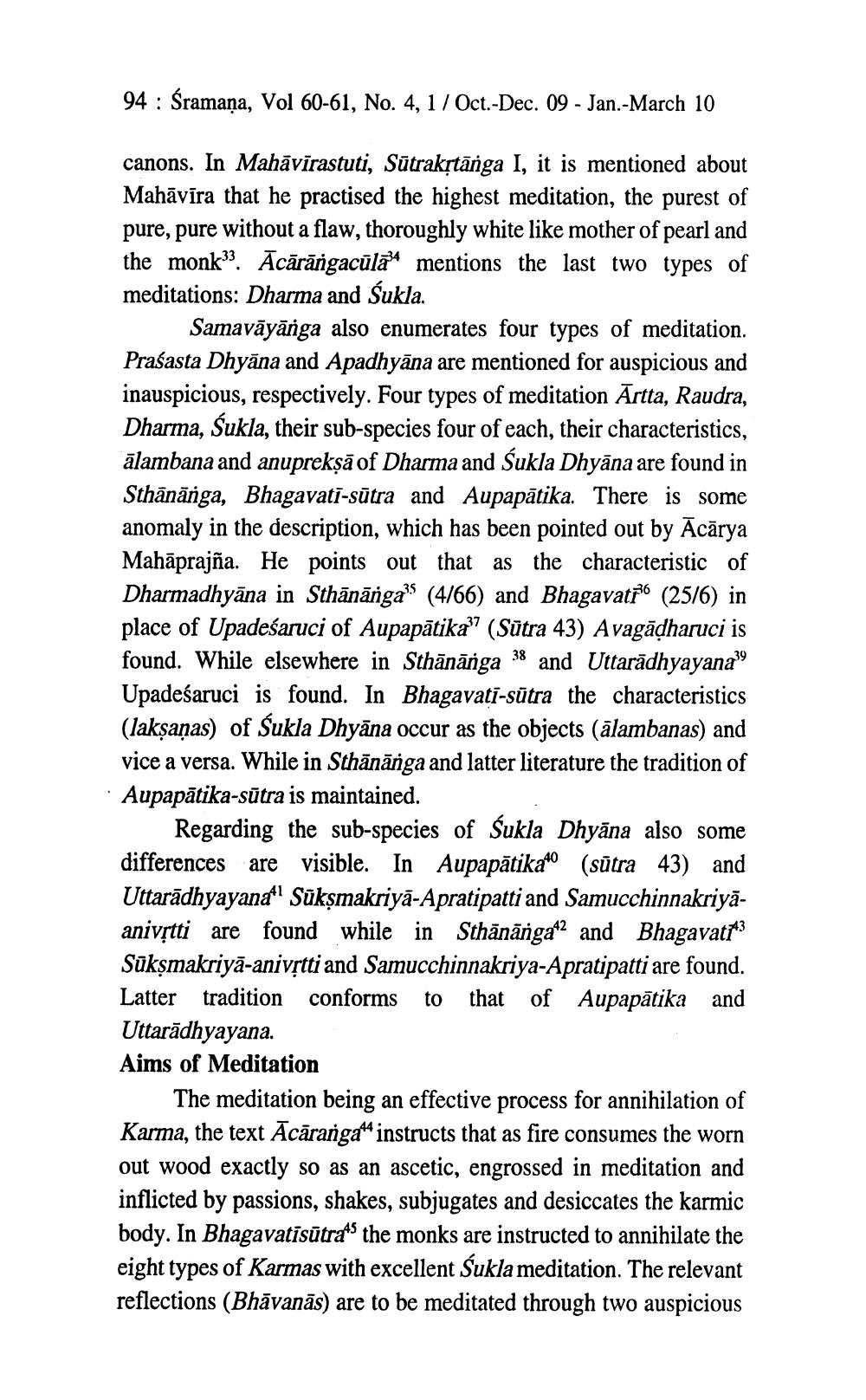________________
94 : Śramaņa, Vol 60-61, No. 4, 17 Oct.-Dec. 09 - Jan.-March 10
canons. In Mahāvīrastuti, Sūtrakstānga I, it is mentioned about Mahāvīra that he practised the highest meditation, the purest of pure, pure without a flaw, thoroughly white like mother of pearl and the monk. Ācārārgacūlão mentions the last two types of meditations: Dharma and Sukla.
Samavāyārga also enumerates four types of meditation. Praśasta Dhyāna and Apadhyāna are mentioned for auspicious and inauspicious, respectively. Four types of meditation Ārtta, Raudra, Dharma, Sukla, their sub-species four of each, their characteristics, ālambana and anupreksā of Dharma and Sukla Dhyāna are found in Sthānānga, Bhagavati-sūtra and Aupapātika. There is some anomaly in the description, which has been pointed out by Ācārya Mahāprajña. He points out that as the characteristic of Dharmadhyāna in Sthānāngas (4/66) and Bhagavat76 (25/6) in place of Upadeśaruci of Aupapātika” (Sūtra 43) Avagādharuci is found. While elsewhere in Sthānārga 38 and Uttarādhyayana! Upadeśaruci is found. In Bhagavati-sūtra the characteristics (lakṣaṇas) of Sukla Dhyāna occur as the objects (ālambanas) and vice a versa. While in Sthānānga and latter literature the tradition of Aupapātika-sūtra is maintained.
Regarding the sub-species of Sukla Dhyāna also some differences are visible. In Aupapātika (sūtra 43) and Uttarādhyayana Sūkşmakriyā-Apratipatti and Samucchinnakriyaanivýtti are found while in Sthānānga^2 and Bhagavatx"3 Sükşmakriyā-anivrtti and Samucchinnakriya-Apratipatti are found. Latter tradition conforms to that of Aupapātika and Uttarādhyayana. Aims of Meditation
The meditation being an effective process for annihilation of Karma, the text Ācāranga“ instructs that as fire consumes the worn out wood exactly so as an ascetic, engrossed in meditation and inflicted by passions, shakes, subjugates and desiccates the karmic body. In Bhagavatisūtra's the monks are instructed to annihilate the eight types of Karmas with excellent Sukla meditation. The relevant reflections (Bhāvanās) are to be meditated through two auspicious




